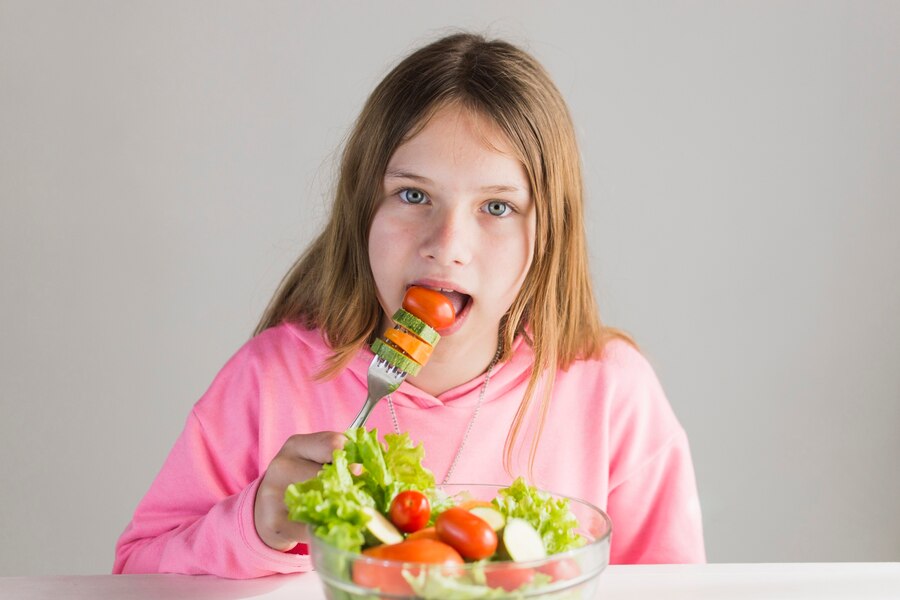The Role of Food Presentation in Child's Appetite

Dr Nick Fuller
Leading Obesity Expert at the University of Sydney and founder of Interval Weight Loss.

Mealtime struggles with kids aren’t uncommon, but did you know that food presentation can play a major role in whether your child eats well or not? Think of it as a little extra trick to make healthy eating more appealing. Research shows that children and adults actually have different preferences for how food is presented on their plates, with kids often favouring more items and vibrant colours.
In this article, we will explore the science behind food presentation and how it can help boost your child’s appetite and encourage better eating habits. Let us discover how a few simple changes to how food is served can make a big difference at the dinner table!
Transform Your Child’s Mealtime Experience with Expert Strategies
If you want to boost your child’s appetite and make mealtimes more enjoyable, Dr Nick Fuller’s Healthy Parents, Healthy Kids is your go-to guide. Packed with expert advice and science-backed strategies, this book will help you create a positive food environment that encourages your child to try new foods and develop healthier eating habits.
From making meals more visually appealing to overcoming common mealtime struggles, Healthy Parents, Healthy Kids offers practical tips for improving your child’s relationship with food. With easy-to-follow advice, you will feel more confident in fostering a love for healthy, diverse meals.
Say goodbye to mealtime stress and give your child the tools they need to enjoy a wider variety of foods. Get your copy of Healthy Parents, Healthy Kids today and start building positive food experiences.
Why Food Presentation is Important
Food presentation isn’t just about making meals look good—it can also play a key role in encouraging your child to eat and enjoy new foods. Here’s why food presentation matters:
- Increases Appeal: Visually appealing meals catch a child's eye and make them more likely to be interested in what’s on their plate.
- Encourages Curiosity: When food is presented creatively, it sparks curiosity, encouraging your child to try new textures and flavours.
- Reduces Mealtime Stress: A colourful, well-arranged plate can make mealtimes feel more relaxed and enjoyable.
- Supports Picky Eaters: For kids who are hesitant about new foods, an attractive presentation can help make unfamiliar dishes seem less intimidating.
- Promotes Healthy Eating Habits: Fun and appealing presentations can motivate your child to embrace a wider variety of foods.
- Boosts Positive Food Association: Making food look fun can help build a positive relationship with eating, turning mealtimes into a more pleasant experience.
How Food Presentation Impacts Child’s Appetite
How your food looks can really affect how much your child eats. By getting creative with how you serve meals, you can make mealtime more fun and encourage better eating habits. Let’s dive into how different food presentation tricks can boost your child’s appetite.
Visual Appeal
When food looks colourful and inviting, it naturally grabs a child’s attention. Bright colours, like those found in fruits, vegetables, and whole grains, can make a meal more enticing and help spark a child’s curiosity. A plate with a mix of colours and textures is more likely to encourage a child to take a bite, especially when they see something that looks fun or interesting.
Texture Variety
Including a variety of textures on the plate can make the meal more exciting. A mix of crunchy, soft, and smooth foods not only adds visual appeal but also stimulates a child’s sense of touch and taste. A variety of textures can encourage children to explore new foods without feeling overwhelmed, making them more likely to try something different.
Looking for more ways to add texture variety to your child’s meals? Click here for expert tips.
Plating Style
How food is arranged on the plate can influence a child’s perception of it. Neatly arranged, well-organised meals can seem more appealing and less chaotic. Creative plating—like arranging food into shapes or creating patterns—can make a meal feel like an exciting adventure rather than just a task. This can especially be helpful for picky eaters who might be more willing to engage with food if it looks fun.
Theme and Storytelling
Using themes or storytelling through food can make mealtimes more engaging and spark your child’s imagination. For example, creating a space-themed meal with star-shaped sandwiches or a rainbow plate with a variety of coloured foods can encourage your child to connect with the food in a more playful way. Storytelling can help make the experience more memorable and enjoyable, fostering a positive connection to eating.
Interactive Elements
Incorporating interactive elements into the meal, such as allowing your child to assemble their own tacos or dip veggies into hummus, can make mealtimes more enjoyable. When children have control over how they engage with their food, it can increase their interest and make the process more fun. These interactive elements can also encourage them to try new foods without feeling forced.
Want to explore fun educational activities about food? Click here for exciting ideas to make learning about food enjoyable!
Appropriate Serving Tools
Using child-friendly serving tools like colourful plates, utensils, and cups can make mealtimes feel more tailored to your child’s needs. These tools are not only functional but can also add a playful touch to the dining experience. A plate with sections for different foods or utensils that fit small hands can help children feel more comfortable and excited about eating.
Consistency and Routine
While creativity in food presentation is key, maintaining a consistent routine around mealtime presentation can also help establish a sense of comfort and predictability. When children know what to expect, they may feel more relaxed and willing to engage with their meals. Consistency in how meals are presented helps set expectations and creates a calming, enjoyable experience around food.
Final Thoughts
Food presentation is a simple yet powerful tool in shaping your child’s eating habits. By making meals visually appealing, introducing texture variety, and adding creative elements, you can transform mealtimes into enjoyable experiences that encourage your child to try new foods and develop a healthy relationship with eating. Remember, small changes to how food is presented can have a big impact on your child’s appetite and willingness to explore different foods. So, get creative, have fun with it, and watch your child’s interest in food grow!
Get the latest tips, pro strategies, exclusive offers, and all the support you need!
Meet Dr Nick Fuller
My Story
As a father, I know first-hand that raising healthy and happy children is tricky. Children are fussy, particularly at the end of the day when they are shattered. We also live in a society where companies seek to profit from what we feed our kids; incorrect and damaging advice is pushed on us and marketed towards our children, and we have no time.
But with these recipes and resources, you and your children can enjoy simple and well-founded food and lifestyle choices for lifelong health.

About Dr Nick Fuller
Dr Nick Fuller is the founder of Interval Weight Loss and is a leading obesity expert at the University of Sydney with a Ph.D. in Obesity Treatment. Dr Fuller is also the author of three best-selling books and his work been published in top ranked journals in the medical field, including JAMA, Lancet and American Journal of Clinical Nutrition.
